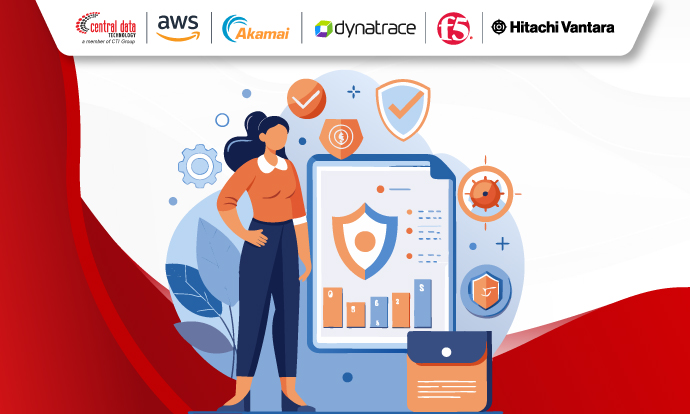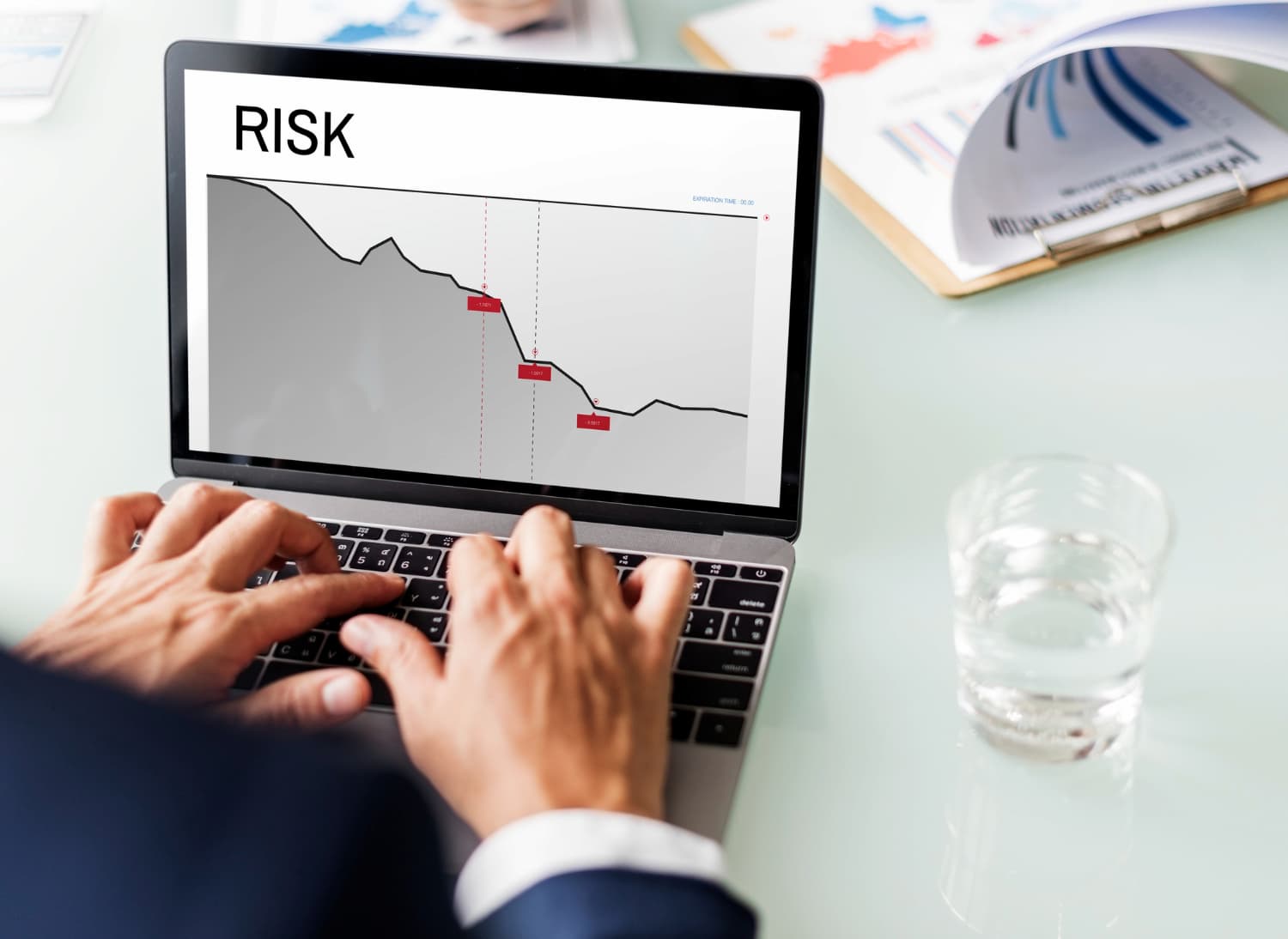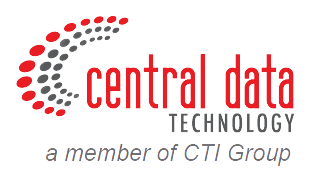
During rapid changes, risks cannot be ignored—they come in various forms and can arise at any time, ready to disrupt a company’s operational smoothness. A survey by PwC indicates that 47 percent of companies experience operational disruptions due to cyber risks. With these challenges, businesses need to implement effective risk mitigation strategies to protect their assets and maintain their reputation.
However, behind these challenges lies opportunities for innovation and growth. With the right risk mitigation strategies, companies can not only safeguard their assets and reputation but also turn risks into growth drivers.
This is where Central Data Technology (CDT) plays a crucial role. We offer a range of innovative solutions designed to strengthen your risk mitigation strategies. Let’s explore five premier products that will help you build a solid foundation in facing various existing risks.
What is Risk Mitigation?

Risk mitigation is a strategy used to reduce the negative impacts or the likelihood of risks that may affect the achievement of an organization’s or project’s goals. This process involves identifying risks, analyzing them to understand the extent of their impact, and determining actions that can be taken to address or minimize those risks.
Risk mitigation strategies can include several approaches, such as avoiding risks by changing plans, reducing impacts through controls or preventive actions, transferring risks to other parties (for example, through insurance), or accepting risks if deemed insignificant. The choice of strategy depends on a thorough evaluation of how much risk can affect the goals to be achieved and the resources available to address it.
What is the Purpose of Risk Mitigation?
The primary purpose of risk mitigation is to reduce the likelihood of risks occurring or to lessen the negative impacts that may arise from those risks on the achievement of organizational, project, or business goals. By proactively managing risks, organizations can protect their assets, resources, and reputation, thereby ensuring operational stability and business continuity.
Additionally, risk mitigation aims to create a safer and more controlled environment for stakeholders such as employees, business partners, and customers. By reducing risks, organizations can avoid unwanted disruptions and ensure that their activities proceed as planned, without significant obstacles.
Why is Risk Mitigation Important for Your Business?

Risk mitigation is crucial for businesses as it helps reduce potential losses and negative impacts that can affect the continuity and success of the company’s operations. Here are some reasons why risk mitigation is important:
1. Reducing Financial Losses
Business risks can lead to financial losses, such as litigation costs, asset loss, or decreased revenue.
2. Enhancing Business Sustainability
By identifying and addressing potential threats, businesses can be better prepared to face challenges that may arise.
3. Protecting Company Reputation
Risks that are not well-managed can damage a company’s reputation, especially if they involve regulatory violations, declines in product quality, or poor customer service.
4. Compliance with Regulations
Businesses must comply with various legal regulations and industry standards. By implementing risk mitigation measures, companies can ensure they operate in accordance with regulations, thereby avoiding fines and penalties that could disrupt operations.
5. Better Decision-Making
Risk mitigation involves a risk assessment process that provides insights into potential issues that may arise.
6. Improving Operational Resilience
Having a strong risk mitigation plan allows businesses to be more resilient in the face of disruptions, such as natural disasters, cyberattacks, or economic changes.
7. Creating a Safe Work Environment
Risk mitigation also includes identifying and managing workplace safety risks, which can reduce injury incidents and enhance employee health and well-being.
Read More: A Comprehensive Guide to Identity and Access Management (IAM)
4 Strategies in Risk Mitigation
To formulate the right mitigation strategy, companies need to understand the four main strategies in risk mitigation: Risk Avoidance, Risk Reduction, Risk Transfer, and Risk Acceptance. Here is a detailed explanation of each of these risk mitigation strategies.
1. Risk Avoidance
This strategy aims to completely avoid exposure to risk by not engaging in activities or decisions that could trigger risk occurrence. This can be accomplished by changing strategies, adjusting business processes, or even canceling a project deemed too risky.
Example: Suppose a technology company considers entering a new country market. However, after conducting a risk analysis, they find that the country has strict regulations on new technologies and high political instability. As a mitigation step, the company decides not to expand into that market to avoid significant financial and operational risks.
2. Risk Reduction
This strategy focuses on reducing the probability of risk occurrence or minimizing the impact that will occur if the risk cannot be avoided. This can be achieved through preventive measures, process improvements, the use of safer technology, or enhancing employee skills.
Example: A manufacturing company may assess a high risk of workplace accidents on the production line. To reduce this, they can adopt stricter safety procedures, provide safety training for employees, or automate dangerous processes using advanced machinery.
3. Risk Transfer
This strategy aims to shift the burden or consequences of risks to third parties, usually through contracts or purchasing insurance. By transferring risks, companies can protect themselves from the financial impacts that may arise from those risks.
Example: A construction company buys insurance policies to protect its projects from risks of damage due to natural disasters or workplace accidents. This way, if a disaster damages a building, the insurance company will cover most of the financial losses.
4. Risk Acceptance
This strategy is used when a risk is deemed to have a minor impact or the cost of managing it with other strategies is too high. Companies decide to accept the risk with full awareness and without taking additional mitigation actions.
Example: A technology startup may decide to accept the risk of minor server disruptions because the cost of implementing higher redundancy infrastructure is not proportional to the potential impact. They prefer to deal with the issue if it arises rather than incurring significant upfront costs.
5 Steps to a Successful Risk Mitigation Strategy
Here are five key steps to follow in order to build a successful risk mitigation strategy:
1. Identify Risks
The first step is to identify all potential risks that could impact business operations. This process involves mapping various sources of risk, both internal and external, such as financial, operational, strategic, legal, or technological risks. Information gathering can be done through discussions with teams, analysis of historical data, or market studies.
2. Perform a Risk Assessment
Once risks are identified, the next step is to assess the severity and likelihood of those risks. This involves quantitative and qualitative analyses to understand the risk’s impact on the business and the probability of occurrence. Risk assessments help companies map risks based on their potential impact on achieving organizational goals.
3. Prioritize Risks
After conducting a risk assessment, the next step is to prioritize risks based on their severity and likelihood. High-impact risks with a high probability of occurrence should be prioritized for mitigation, while low-impact risks may be acceptable without further action.
4. Monitor Risks
Risk monitoring is a continuous process that ensures that identified and assessed risks remain under control. Risks can evolve over time, making it essential to continually monitor the situation and adjust mitigation strategies as needed. This may involve monitoring Key Performance Indicators (KPIs), changes in the business environment, or feedback from teams.
5. Report and Document
The final step is to document and report the results of risk monitoring and the mitigation actions that have been taken. This report serves not only as a reference for evaluating the effectiveness of strategies but also as a communication tool for stakeholders, including senior management and the board of directors.
By systematically following these five steps, you can effectively implement risk mitigation strategies. At Central Data Technology (CDT), we offer various innovative tools to assist you. With the right solutions, you can manage risks more efficiently and effectively.
5 Recommended Risk Mitigation Solutions from Central Data Technology (CDT)
At Central Data Technology (CDT), we are committed to helping your company build a solid foundation for risk mitigation. With our state-of-the-art tools and technologies, you can design and implement risk mitigation strategies that are not only effective but also adaptable to rapid changes in the business environment.
Let’s delve deeper into these solutions and discover how CDT can be a trusted partner in your risk mitigation journey:
1. Risk Mitigation with AWS
AWS (Amazon Web Services) is a leading cloud solution that offers a flexible and secure infrastructure to support your business operations. With the ability to implement robust security controls, perform automatic backups, and ensure high system availability, AWS enables you to reduce risks associated with data storage and IT operations.
Advantages:
- Scalable infrastructure that supports business growth
- High-level security with encryption features and compliance
- Reliable backup and disaster recovery automation
2. Akamai Guardicore Segmentation
Akamai Guardicore Segmentation is an advanced solution that provides segmentation and additional protection for applications within your network. With cutting-edge segmentation technology, this product helps prevent the spread of cyber threats and ensures that sensitive data remains secure.
Advantages:
- Prevents lateral movement of threats within the network
- Ensures regulatory compliance with proper segmentation
- Strengthens application security with granular access controls
3. Dynatrace AI Observability: Solution for Business Risk Mitigation
Dynatrace offers an AI-based observability platform that allows you to monitor application performance in real-time. With in-depth analysis and automation, you can identify and address potential issues before they become significant threats to your business.
Advantages:
- Comprehensive monitoring of application and infrastructure performance
- Predictive analytics to anticipate issues before they occur
- Seamless integration with various existing tools and technologies
4. F5 WAAP
F5 WAAP (Web Application and API Protection) is a comprehensive solution that protects your web applications from various cyber threats, including DDoS attacks and data breaches. With advanced security features, F5 WAAP ensures that your online assets remain secure while providing a seamless user experience.
Advantages:
- Comprehensive protection against modern cyber threats
- Integrated threat intelligence to respond quickly to vulnerabilities
- High performance and low latency for optimal user experience
5. Hitachi Vantara
Hitachi Vantara provides robust storage and analytics solutions to help businesses manage and protect their data. With advanced technology, this product enables better risk analysis and facilitates more informed decision-making in risk mitigation strategies.
Advantages:
- Scalable storage solutions for big data
- AI-driven analytics for deeper insights
- High integration capabilities with existing systems
Maximize Your Protection Through Risk Mitigation Solutions from Central Data Technology
Central Data Technology (CDT) is here as a strategic partner ready to assist your company in building a resilient risk mitigation strategy that responds effectively to changes in the business environment. With a planned approach, we ensure you are better prepared to face various challenges.
With in-depth experience and a strong understanding of leading risk mitigation solutions such as AWS, Akamai, Dynatrace, F5, and Hitachi Vantara, CDT is prepared to support you in maximizing the operational protection of your business.
As part of the PT Computrade Technology International (CTI) Group, we are committed to guiding you at every step, from the implementation process to maintenance and after-sales support. Don’t wait any longer to gain a competitive edge through optimal data utilization. Contact the CDT team today to start your analytical transformation journey. Click here to connect with us and find the right solutions for your business needs!
Author: Ary Adianto
Content Writer CTI Group

